The vast majority of passenger travel in the United States occurs by automobile for shorter distances and airplane or railroad for longer distances. Most cargo in the U.S. is transported by, in descending order, railroad, truck, pipeline, or boat; air shipping is typically used only for perishables and premium express shipments. Transportation is the largest source of greenhouse gas emissions in the United States.

Transport economics is a branch of economics founded in 1959 by American economist John R. Meyer that deals with the allocation of resources within the transport sector. It has strong links to civil engineering. Transport economics differs from some other branches of economics in that the assumption of a spaceless, instantaneous economy does not hold. People and goods flow over networks at certain speeds. Demands peak. Advance ticket purchase is often induced by lower fares. The networks themselves may or may not be competitive. A single trip may require the bundling of services provided by several firms, agencies and modes.
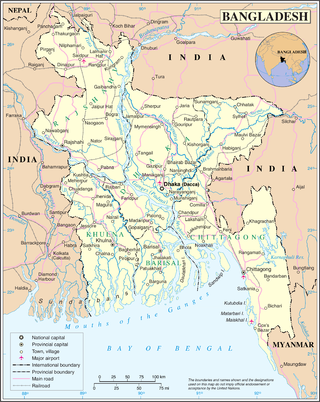
Since Bangladesh's independence in 1971, the transportation sector has grown rapidly and transportation medium on land and rivers have begun to develop. Air travel came into existence later. Though Bangladesh has greatly evolved in the transportation sector, it still has many flaws which hamper the development of other economic and social sectors. Transportation has evolved in mostly land vehicles but it still needs improvement in safety standards, which endangers the life of civilians.

Commuting is periodically recurring travel between one's place of residence and place of work or study, where the traveler, referred to as a commuter, leaves the boundary of their home community. Regarding occupation, it is also colloquially called the journey to work. By extension, it can sometimes be any regular or often repeated travel between locations, even when not work-related. The modes of travel, time taken and distance traveled in commuting varies widely across the globe. Most people in least-developed countries continue to walk to work. The cheapest method of commuting after walking is usually by bicycle, so this is common in low-income countries but is also increasingly practised by people in wealthier countries for environmental and health reasons. In middle-income countries, motorcycle commuting is very common.
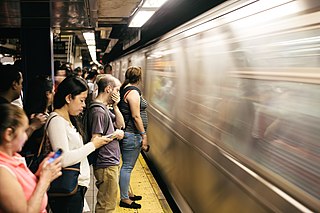
A rush hour or peak hour is a part of the day during which traffic congestion on roads and crowding on public transport is at its highest. Normally, this happens twice every weekday: once in the morning and once in the afternoon or evening, the times during which most people commute. The term is often used for a period of peak congestion that may last for more than one hour.

Transit police are specialized police agencies employed either by a common carrier, such as a transit district, railway, railroad, bus line, or another mass transit provider or municipality, county, district, or state.
In the United Kingdom, passenger transport executives (PTEs) are local government bodies which are responsible for public transport within large urban areas. They are accountable to combined authorities, which were created between 2011 and 2016 and took the role of integrated transport authorities (ITAs). The PTEs have joined together to form the Urban Transport Group, in which Transport for London and Strathclyde Partnership for Transport also participate.

Paratransitor Intermediate Public Transport, is a type of transportation services that supplement fixed-route mass transit by providing individualized rides without fixed routes or timetables. Paratransit services may vary considerably on the degree of flexibility they provide their customers. At their simplest they may consist of a taxi or small bus that will run along a more or less defined route and then stop to pick up or discharge passengers on request. At the other end of the spectrum—fully demand responsive transport—the most flexible paratransit systems offer on-demand call-up door-to-door service from any origin to any destination in a service area. In addition to public transit agencies, paratransit services may be operated by community groups or not-for-profit organizations, and for-profit private companies or operators.

The Pennsylvania Department of Transportation (PennDOT) oversees transportation issues in the Commonwealth of Pennsylvania. The administrator of PennDOT is the Pennsylvania Secretary of Transportation, Michael B. Carroll. PennDOT supports nearly 40,000 miles (64,000 km) of state roads and highways, about 25,000 bridges, and new roadway construction with the exception of the Pennsylvania Turnpike Commission.

The Southern California Rapid Transit District was a public transportation agency established in 1964 to serve the Greater Los Angeles area. It was the successor to the original Los Angeles Metropolitan Transit Authority (MTA). California State Senator Thomas M. Rees sponsored the bill that created the RTD, which was meant to correct some deficiencies of the LAMTA, and took over all of the bus service operated by MTA on November 5, 1964. RTD was merged into the Los Angeles County Metropolitan Transportation Authority in 1993.
The Illinois Department of Transportation (IDOT) is a state agency in charge of state-maintained public roadways of the U.S. state of Illinois. In addition, IDOT provides funding for rail, public transit and airport projects and administers fuel tax and federal funding to local jurisdictions in the state. The Secretary of Transportation reports to the Governor of Illinois. IDOT is headquartered in unincorporated Sangamon County, located near the state capital, Springfield. In addition, the IDOT Division of Highways has offices in nine locations throughout the state.
The Massachusetts Department of Transportation (MassDOT) oversees roads, public transit, aeronautics, and transportation licensing and registration in the US state of Massachusetts. It was created on November 1, 2009, by the 186th Session of the Massachusetts General Court upon enactment of the 2009 Transportation Reform Act.

A transit district or transit authority is a government agency or a public-benefit corporation created for the purpose of providing public transportation within a specific region.
In public transportation, schedule adherence or on-time performance refers to the level of success of the service remaining on the published schedule. On time performance, sometimes referred to as on time running, is normally expressed as a percentage, with a higher percentage meaning more vehicles are on time. The level of on time performance for many transport systems is a very important measure of the effectiveness of the system.
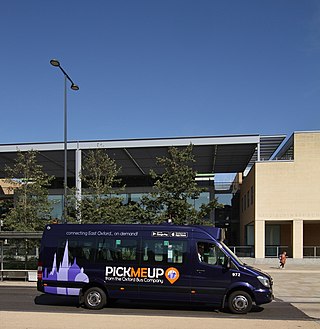
Demand-responsive transport (DRT), also known as demand-responsive transit, demand-responsive service, Dial-a-Ride transit, flexible transport services, Microtransit, Non-Emergency Medical Transport (NEMT), Carpool or On-demand bus service is a form of shared private or quasi-public transport for groups traveling where vehicles alter their routes each journey based on particular transport demand without using a fixed route or timetabled journeys. These vehicles typically pick-up and drop-off passengers in locations according to passengers needs and can include taxis, buses or other vehicles. Passengers can typically summon the service with a mobile phone app or by telephone; telephone is particularly relevant to older users who may not be conversant with technology.
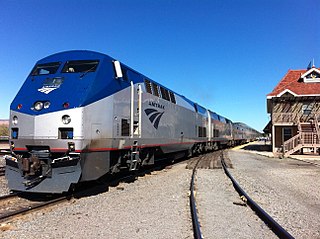
The United States is serviced by a wide array of public transportation, including various forms of bus, rail, ferry, and sometimes, airline services. Most established public transit systems are located in central, urban areas where there is enough density and public demand to require public transportation. In more auto-centric suburban localities, public transit is normally, but not always, less frequent and less common. Most public transit services in the United States are either national, regional/commuter, or local, depending on the type of service. Sometimes "public transportation" in the United States is an umbrella term used synonymously with "alternative transportation", meaning any form of mobility that excludes driving alone by automobile. This can sometimes include carpooling, vanpooling, on-demand mobility, infrastructure that is oriented toward bicycles, and paratransit service. There is public transit service in most US cities.

A high-occupancy toll lane is a type of traffic lane or roadway that is available to high-occupancy vehicles and other exempt vehicles without charge; other vehicles are required to pay a variable fee that is adjusted in response to demand. Unlike toll roads, drivers have an option to use general purpose lanes, on which a fee is not charged. Express toll lanes, which are less common, operate along similar lines, but do not exempt high-occupancy vehicles.
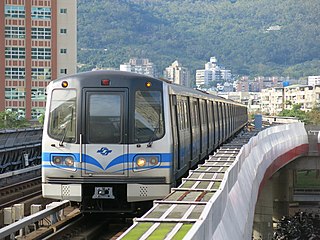
Public transport is a system of transport for passengers by group travel systems available for use by the general public unlike private transport, typically managed on a schedule, operated on established routes, and that may charge a posted fee for each trip. There is no rigid definition of which kinds of transport are included, and air travel is often not thought of when discussing public transport—dictionaries use wording like "buses, trains, etc." Examples of public transport include city buses, trolleybuses, trams and passenger trains, rapid transit and ferries. Public transport between cities is dominated by airlines, coaches, and intercity rail. High-speed rail networks are being developed in many parts of the world.

The transportation system in Metro Manila covers the road network, rail network, ferries, ports and airports located with the metropolitan Manila area. Road transportation in Metro Manila is diverse, composed of many types of private and public transport vehicles. These include Taxis, buses, jeepneys, tricycles and pedicabs. In some areas, especially in Divisoria and large public markets, two-stroke motors are fitted in the pedicabs and are used for goods transport. Regardless of modernity, horse-drawn kalesas are still used in the streets of Binondo and Intramuros. Ridesharing services such as Grab also operate within in Metro Manila.
Commute.org is the transportation demand management (TDM) agency for San Mateo County, California, United States. Structured as a public joint powers agency, Commute.org is governed by an 18-member board made up of elected officials from 17 member cities and towns as well as the County of San Mateo. In addition to the Board of Directors, there are also standing committees, Supervisory and Finance, which provide guidance and oversight to the agency.














